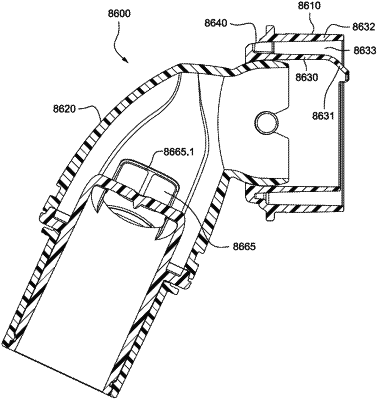| CPC A61M 16/0825 (2014.02) [A61M 16/0057 (2013.01); A61M 16/06 (2013.01); A61M 16/0616 (2014.02); A61M 16/0683 (2013.01); A61M 16/0816 (2013.01); A61M 16/20 (2013.01); A61M 16/0069 (2014.02); A61M 2202/0225 (2013.01); A61M 2205/42 (2013.01); F16L 27/04 (2013.01)] | 20 Claims |

|
1. An elbow assembly for a patient interface, the elbow assembly comprising:
a component adapted to connect to a patient interface,
wherein the component includes a plurality of vent holes for gas washout,
wherein the component includes an inner radial wall and an outer radial wall that define a radial channel leading to the plurality of vent holes,
wherein the inner radial wall functions as a baffle configured to segregate an inlet flow of pressurized gas from an outlet flow of exhaust gas,
wherein the plurality of vent holes are provided along the outer radial wall to allow exhaust gas to be directed in a generally radial outward direction from the elbow assembly,
wherein the radial channel is configured to guide the outlet flow from a generally axial direction down the radial channel to the generally radial outward direction as the exhaust gas exits the plurality of vent holes to atmosphere, and
wherein at least a portion of the inner radial wall includes an inwardly extending lip or chevron structured and arranged to redirect flow in a manner that reduces noise and/or minimizes flow directly onto sensitive parts of a patient's face.
|